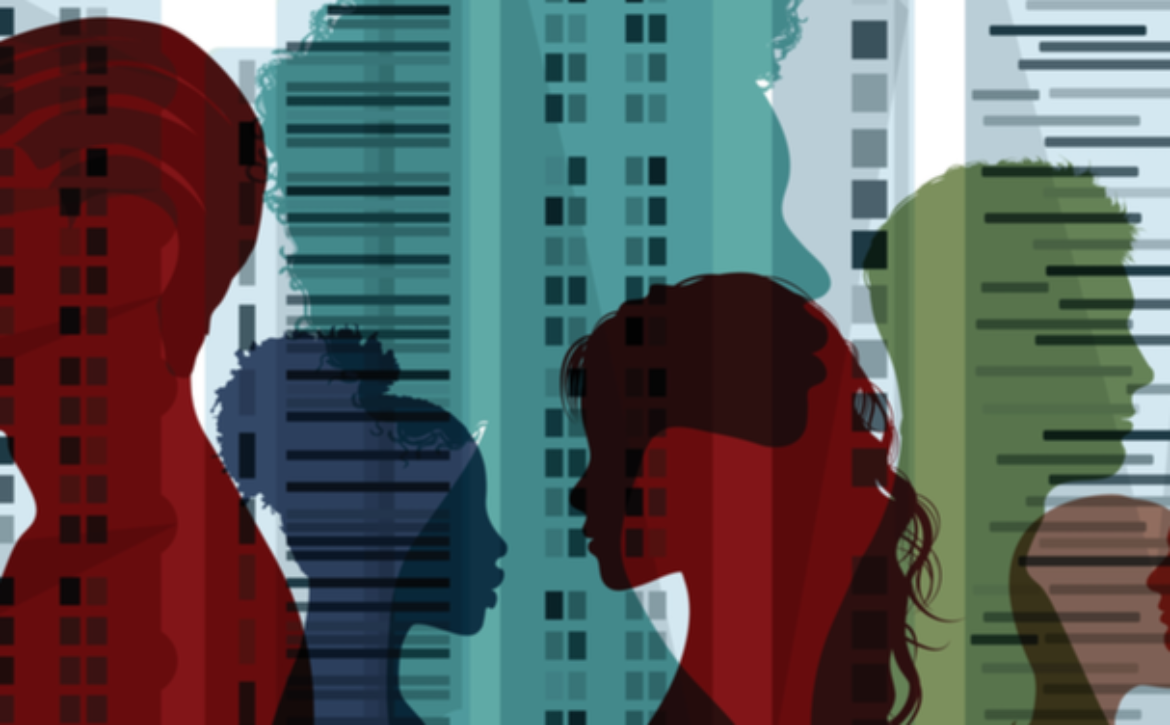
How to Build a Society for All to Enjoy – Issue 107: The Edge
Structuresstructure (noun): the arrangement of or relation between the parts of something complex; the organization of interrelated elements.1.My partner trained as an architect, and now he is cursed. His curse is not just working like an architect works, with grueling hours and implacable clients, although that’s true. His curse is seeing like an architect sees. Every structure is, to him, a palimpsest of the structure that could have been, if the people who built things—other architects, of course, and also building-code writers and contractors and construction workers and landscapers and interior designers—had made different choices. If they had made better choices.Sometimes, the “what-if” structure is only a minor variation on the structure that actually exists: If the cabinet maker were more expert, for instance, the custom wine rack would have fitted perfectly. Other times, the “what-if” structure is more consequential: If better insulation had been installed, then some Texans might not have frozen to death in their homes during this year’s winter storm. Much of the built environment in American cities, if you stop and look at it, really look, is ugly. Even worse—it’s hostile to humans doing basic human things, like walking, or breathing. Not being able to ignore that ugliness and hostility, not being able to unsee how structures could be different, is the architect’s curse.INVISIBLE STRUCTURE: The way some social structures operate is hard to see. Things like family and educational systems, and labor and dating markets—they are “the IKEA stores of our lives,” Kathryn Paige Harden writes. “We appear to meander along organically but are actually being steered deliberately along predictable routes.”ZikG / ShutterstockStructure derives from the Latin, “struere,” which means “to build.” The infinitive form of the verb allows the subject—the builders doing the building—to lurk in the shadows, but they are always there. Sociologists use the term “social structures” to describe how we, as individuals and as a collective, have built our social lives, the patterned ways we relate to each other. Using the term “structure” to refer to our social arrangements conveys something about their solidity, their reality, their power. Like physical structures, social structures can facilitate individual action in one direction but constrain it in another. In Texas, I can zip up I-35 in my car but would struggle to cross over I-35 on my bike; I can buy a gun this afternoon but would have to wait three days to get married, and it might take me a year or more to enroll a toddler in center-based daycare. But “structure” also conveys how social arrangements are the result of choices—our choices. We are the builders of our social world. Like architects, sociologists have a second sight about structures: They are trained not only to describe what is, but also to imagine what could be, if we made different choices.The Americans with Disabilities Act (ADA) is a piece of social structure that affects architectural structures. First signed into law in 1990 by President George H.W. Bush, the ADA prohibits discrimination against people on the basis of disability, including in their “full and equal enjoyment of … any place of public accommodation.” Architectural barriers to “full and equal enjoyment” must be removed. Complying with federal legislation, the Texas Government Code on the elimination of architectural barriers lists building requirements for drinking fountains, bathrooms, pools, bus stops, change machines, miniature golf facilities, and—this is Texas, after all—“shooting facilities with firing positions.” Reading the accessibility requirements, I am astonished at how many micro-level choices (“openings in floor or ground surfaces shall not allow passage of a sphere more than ½ inch (13 mm) diameter”) are governed by one macro-level choice: We will change structures to include people.A fundamental problem is the idea that society should be structured as a race we all compete in, rather than a building we all have to live in.
Or, rather, sometimes we will. We will also change structures to exclude people. Jackson, Mississippi, drained its swimming pools rather than include Black swimmers. Prince Edward County, Virginia, closed its entire public school system rather than include Black students. Austin, Texas, created a “Negro” district, which was the only part of the city where Black families could access schools or public services, and which had weakened zoning restrictions to allow “slightly objectionable industrial uses” that were prohibited in white neighborhoods.In a twin biography of Malcolm X and Martin Luther King, Jr., historian Peniel Joseph described how the segregation of physical space on the basis of race was an affront to what he termed “radical Black citizenship” and “radical Black dignity.” Citizenship and dignity—these are the lodestars of civil rights legislation prohibiting discrimination on the basis of race or disability or other human difference. Whether a structure upholds the citizenship and dignity of people who have to live their lives within and around it, in my view, is very close to the heart of whether a structure is “good.” Citizenship is more than voting rights, although voting is obviously critical and getting harder by the day. Citizenship is the ability to participate in the political and social and economic life of a country.As King said, just weeks before his murder, “What does it profit a man to be able to eat at an integrated lunch counter if he doesn’t earn enough money to buy a hamburger and a cup of coffee?” The affirmation of dignity is equally important: There’s a difference between inclusion and pity. The sinners damned to eternal torment in Dante’s Inferno thank the narrator for his pity. He swoons at their agony, but his intensity of feeling does nothing to change their position, which is structurally inferior. They are trapped in hell and he can leave for heaven. A demand for inclusion, on the other hand, is a claim to joint-ownership on the basis of equal dignity: I am just as worthy of heaven as you.2.Up to this point, I have said nothing about whether disabilities that are protected by the ADA are caused by genes or the environment. Nor have I weighed in on the relationship between socially constructed racial groupings and genetic ancestry. I could enumerate other such “nature vs. nurture” issues for other dimensions of human difference protected, to varying degrees, by civil rights legislation. The narrative that queer and trans people are “born this way” was certainly ascendant for a time. But, some in the LGBT+ community have pushed back against that narrative, articulating how, for them, their sexual experiences and gender identities feel chosen or fluid rather than fixed and “innate”—and chosen experiences and identities are no less worthy of legal protection against discrimination. As the writer Andrew Solomon pointed out: “Surely, when we defend the rights of Jews or Muslims, we don’t imply that they can’t help being that way; rather, we confer dignity on a chosen way of life.”I can buy a gun this afternoon but would have to wait three days to get married.
The reason for my lack of attention, thus far, to these “nature vs. nurture” questions is simple: The answers to them are irrelevant to what I’ve been considering about what makes structures good. As a college professor, I most commonly encounter ADA accessibility requirements not in the form of building codes but in the need to caption videos and lectures for my hearing-impaired students. It would be bizarre—not to mention illegal—if I only accommodated the needs of students who were hearing-impaired because of an environmental cause (like maternal rubella infection) but not a genetic one.I am certainly not the first person to point out that empirical questions about whether human differences are “genetic” or “biological” can be irrelevant to the moral question of how we should relate to each across those differences. The psychologist Leon Kamin made this point decades ago: “Are ‘genetically’ produced differences more just, good, or true than ‘environmentally’ produced differences?” Similarly, the political philosopher John Rawls suggested that, “Once we are troubled by the influence of either social contingencies or natural chance on the determination of distributive shares, we are bound, on reflection, to be bothered by the influence of the other. From a moral standpoint the two seem equally arb.” The ADA makes this abstract philosophical idea concrete, sometimes literally. Knowing why my students are different does not tell me whether I should structure my class to accommodate those differences.Nevertheless, people conflate these questions constantly. In fact, I think most of the public attention paid to my scientific discipline of behavioral genetics is driven by the deeply mistaken belief that discovering whether or not there are genetic or biological causes of human differences will reveal something deeply important about whether social structures should be inclusive of those differences. The question of cause—and, specifically, the question of biological causes—keeps creeping into our conversations. Why?3.There is one particular instance where the question of why people differ is essential to the question of whether that event has been structured appropriately—a race. (“Race” in the sense of track-and-field, i.e., “a competition to see which is fastest.”) Unlike an ADA-compliant building, which is structured so that different people can experience something similarly, races are structured to produce differences in outcome among otherwise similar people. Races are structured so that these differences in outcomes can be rewarded differently. Races are structured to produce winners and losers. Races discriminate between people.In a race, the question of cause—why did someone finish the race first?—is, as I said, essential to the question of whether the race was set up properly. If differences in how fast people run are caused by some types of environments (e.g., some people had a different starting line), then the win is illegitimate. We have to revise the rules of the race; we have to change the structure. But, if differences in how fast people run are caused by something “genetic,” then the winners are entitled to their win. They own their own bodies. To the victors go the spoils.If differences are caused by something genetic, then the winners in society are entitled to their win. Nearly all of our public discourse about genetics follows from this (deeply flawed) premise. What is often called the “hereditarian” position answers in the affirmative: Yes, differences in people’s life outcomes are caused by genetic differences between them, so, yes, the “winners” in society’s rat races are entitled to their win. In this way, genetic differences are invoked to “naturalize” inequality.A tempting, but ineffective, response to the hereditarian attempt to naturalize inequality is to deny or minimize the influence of nature. No, absolutely not, it could not possibly be true that genetic differences between people matter for their outcomes in the “meritocratic” competitions (for grades, for places at university, for jobs, for promotions) that are ubiquitous in our modern lives.Such a position is ineffective, because it is empirically wrong, and because few people actually believe it. As the psychologist Eric Turkheimer recognized almost 25 years ago, “assertions like these strain credulity, and play into the hands of a radical right that stigmatizes its opponents as gullible or dishonest fools whose political doctrines blind them to obvious scientific facts.”Social structures are the IKEA stores of our lives. They steer us along predictable routes.
A more effective response to hereditarianism, which also has the benefit of being accurate, is to point out all the ways that a race could have turned out differently, or could turn out differently in the future. After all, the existence of genetic influences does not pose any hard boundaries to the possibility of improving functioning: People run faster in response to training; children who are given better environments early in life perform better in school. At the same time, impoverished environmental contexts can impede people from fulfilling their maximum potential level of functioning. It’s therefore impossible to know, in retrospect, what any one person’s maximum level of functioning might have been, given a different environment.All of the points I’ve summarized in the previous paragraph are important, but none is radical enough. None of these ideas, important as they are, addresses the flawed premise of the conversation, the idea that all of the goods of a society should be dangled as prizes in a single, high-stakes race. Improving human functioning is possible! More than possible—it is, in my view, a good thing to do. But, even if we gave everyone on Earth the most ideal training regimen we could possibly imagine, we will still observe differences between people in how fast they run, because that is what races are structured to do. Races are high-stakes competitions designed to discriminate between people on the basis of a single domain of human functioning.The fundamental problem with hereditarianism isn’t that genetics matters for human difference. The fundamental problem with hereditarianism is the idea that society should be structured as a race we all compete in, rather than a building we all have to live in. A building built for our full and equal enjoyment. A building where we are joint-owners. A building we build for each other.4.The results of genetic research will not be an arbiter of whether structures are good. The latest twin study or genome-wide association study will not tell us whether we need to take responsibility for building new structures that better accommodate human difference. What, then, is genetics for? After all, I have written a book that is subtitled, “Why DNA Matters for Social Equality,” so clearly I think genetics is good for something.Genetics will not judge whether structures are good. Much more modestly, genetics is a tool for seeing structures as they are.Some structures are obviously ugly and hostile. Drained swimming pools, shuttered public schools—we don’t need genetics to see how these structures harm. But some structures operate more invisibly. They are the IKEA stores of our lives: We appear to meander along organically but are actually being steered deliberately along predictable routes. Family systems can work like this, as can educational systems. Labor markets. Dating markets. As an individual person, you begin college or work or marriage or parenthood with the expectation that you’re going to destination A, but then you end up at destination B instead. “How did I end up here?” we wonder.Social scientists are used to interrogating structures in terms of critical dimensions of human difference—gender, race, social class, disability. And, to be absolutely clear, I think studying how these differences play out in human lives is vitally important work; they are worthy of study and worthy of being the focus of policy agendas. But, they are not the whole story of inequality. In the case of education, even if children of different genders, children from different socioeconomic backgrounds, children from different schools were exactly equal, on average, in their academic achievement, we would have eliminated only half of the total inequality in educational outcomes among secondary school students (and even less among primary school students). The majority of educational inequality in the United States and in other high-income nations exists within families—including inequalities associated with genetic differences between family members. Is the genome not a dimension of human difference that merits our attention?STRUCTURED BY GENES: Student DNA can be used to visualize the flow of students through the high school math curriculum. Harden, D., et al. Genetic associations with mathematics tracking and persistence in secondary school. npj Science of Learning, 5, 1 (2020).As an example of how genetic tools can help us see, consider students’ progress through the high school math curriculum—a structure that is being hotly debated in school districts around the country. A student’s DNA sequence cannot change as he winds his way through high school, so that genetic sequence can be used as an inert molecular tracer that lights up how they move from Algebra to Geometry, illuminating the pathways and choke points that might be otherwise invisible even to the students themselves. Among U.S. high school students of European genetic ancestry, student genetics predicts being tracked to better math classes and persisting in math classes for longer—and this association persists even above and beyond information that is more visible, such as family socioeconomic status, school-level socioeconomic status, and even students’ GPA in their math class the previous year.Again, studying the association between genetic differences and an outcome like mathematics course taking will not tell me if that curriculum is good or bad, whether high school math should be de-tracked, whether the differences in labor market outcomes between students who took Calculus and those who didn’t are fair or unfair. Genetics is simply a tool for seeing what the structure is. It is up to us to imagine what the structure should be.It’s harder to imagine what structures should be, if we deny ourselves tools for seeing what they are right now. Yet this is exactly what much psychological and sociological research does. Too many of my colleagues pay lip service to a “biopsychosocial” model of human development, while in actuality failing to pay attention to any genetic differences between people in their research designs. I understand why that is: They’ve been convinced that the existence of genetic influences on human differences would “naturalize” inequalities between people, and they fear giving any rhetorical ammunition to people opposed to social change. However, ignoring genetics in social science research in order to preserve the possibility of social change is a fundamentally counterproductive strategy. If we actually want to change social structures to be more equal, more inclusive, more accommodating of human differences, we can’t blind ourselves to a major source of those differences. We need to be able to see.Kathryn Paige Harden (@kph3k) is a professor of psychology at the University of Texas at Austin, where she is the director of the Developmental Behavior Genetics Lab and the codirector of the Texas Twin Project. She is the author of The Genetic Lottery: Why DNA Matters for Social Equality (Princeton).Lead image: melitas / ShutterstockRead More…
Read More


